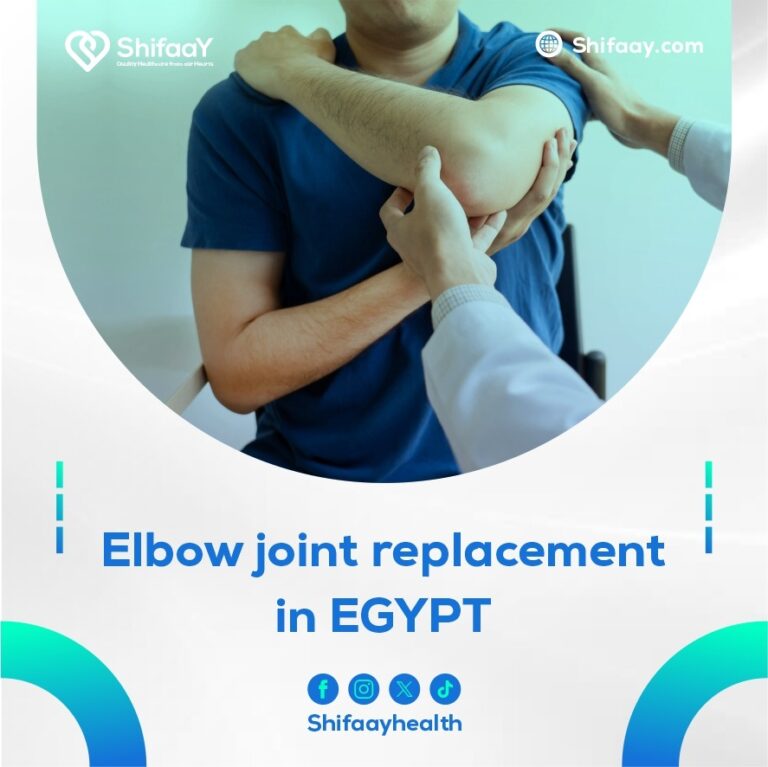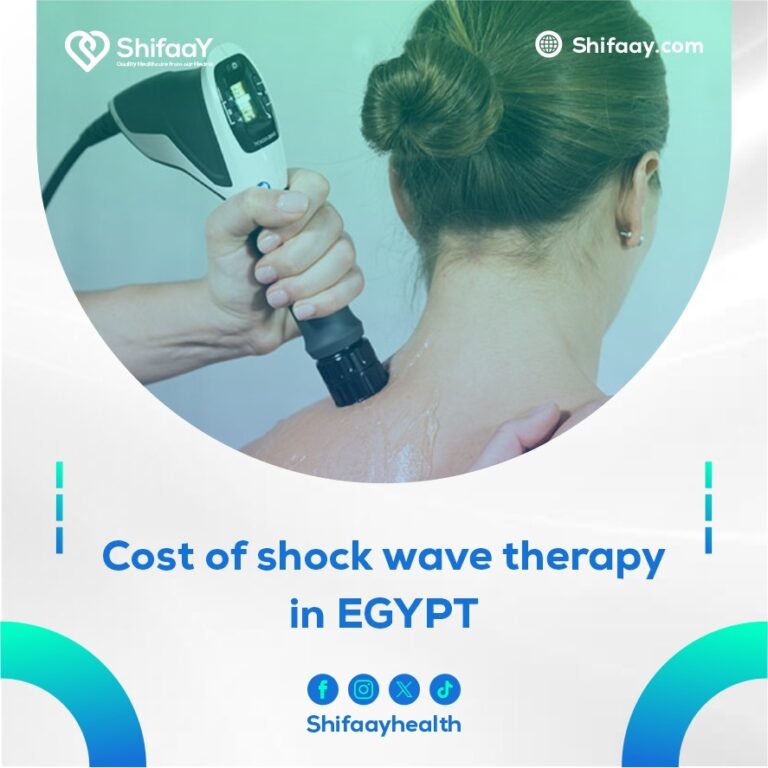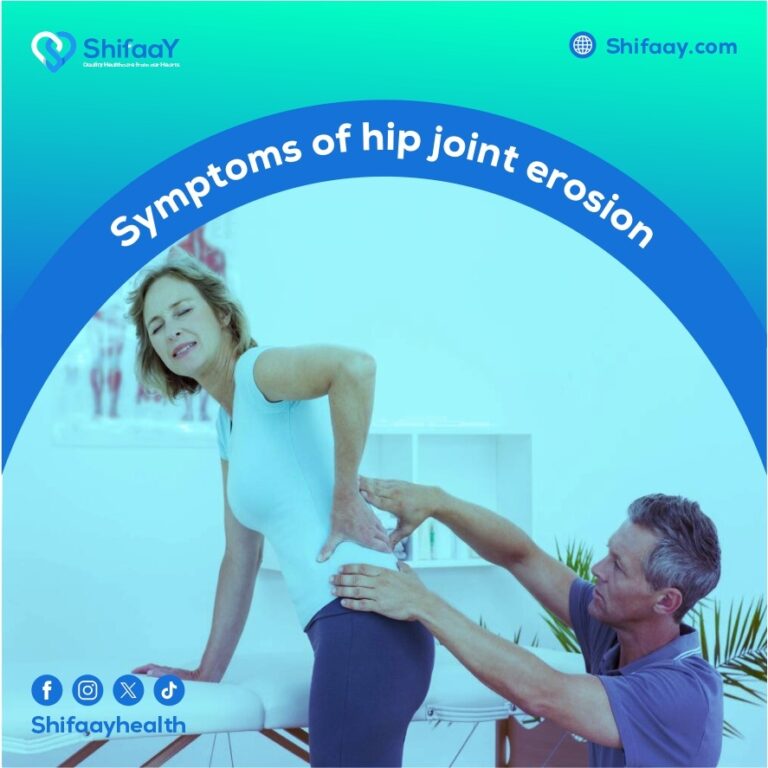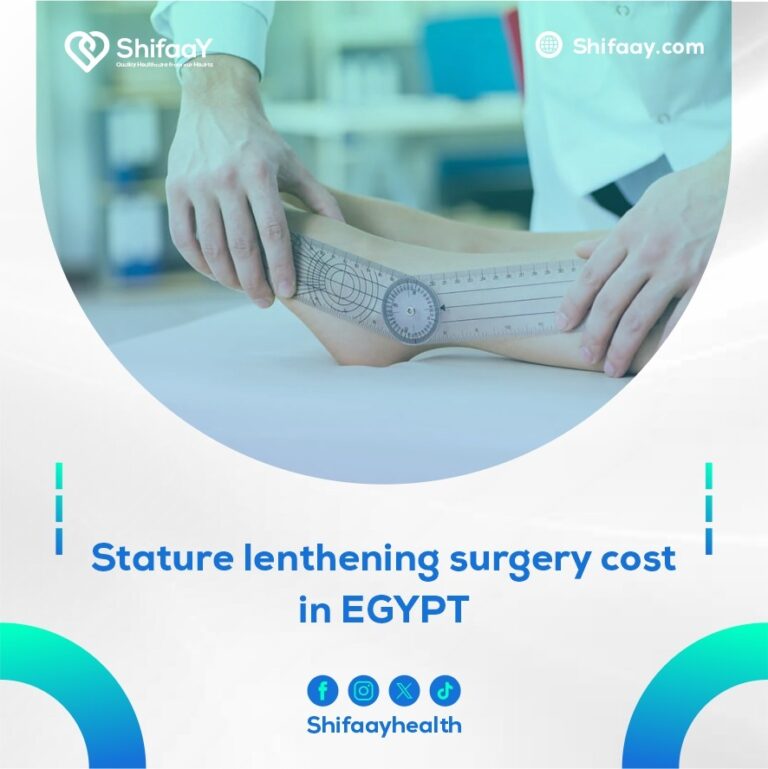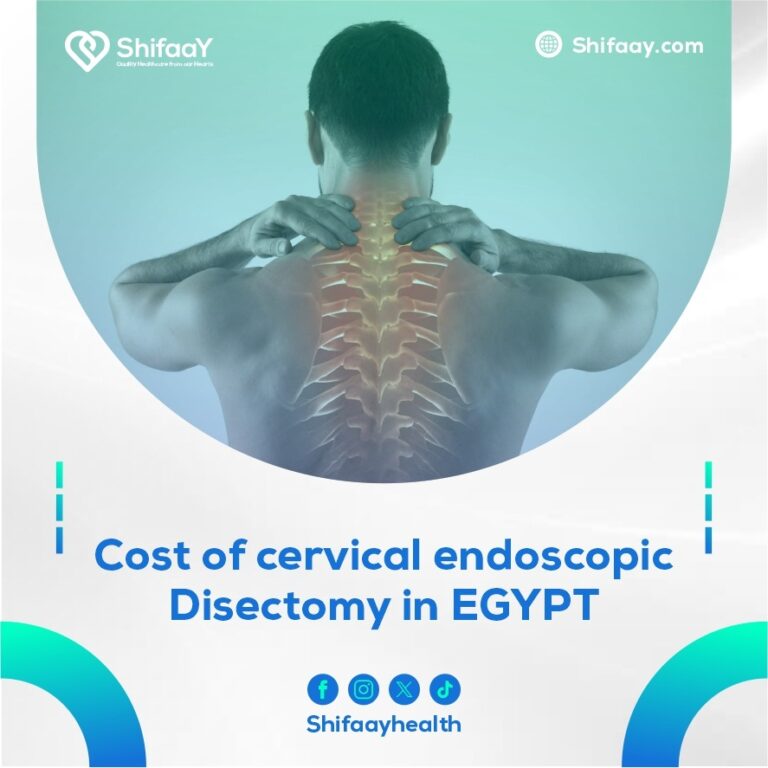Treatment of Hip Joint Degeneration
Have you ever experienced a sudden pain in your hip that hinders your movement and makes you rethink your daily activities? Have you felt worried that this pain might be the beginning of a chronic health condition? In fact, many of these symptoms may be caused by femoral head erosion, which is a medical condition that significantly affects the joint and gradually leads to difficulty in movement and persistent pain that worsens over time, noticeably impacting quality of life. Therefore, it is crucial not to ignore early symptoms such as morning stiffness or discomfort while walking or climbing stairs, as early intervention can limit the progression of the condition and reduce its complications.
Femoral head erosion is one of the most common health problems that directly impacts a person’s ability to carry out daily life activities normally. It often requires prompt and precise medical intervention, as the progressive erosion leads to joint deterioration and walking difficulty. This erosion is often due to interrupted blood supply to the bone, repeated injuries, or chronic conditions such as osteoporosis. For this reason, Shifaay Healthcare Center, one of the leading and pioneering medical centers in providing orthopedic and specialized rehabilitative care, offers comprehensive and precise medical services to treat femoral head erosion, ensuring the best possible outcomes.
What sets Shifaay Healthcare Center apart is its consistent use of the latest medical and rehabilitative technologies for the treatment of femoral head erosion, in addition to its specialized medical team composed of a leading group of consultants and physicians in orthopedics and physical therapy. These experts possess extensive experience in managing complex and chronic cases and are distinguished by providing personalized care for each patient—starting with accurate diagnosis, followed by a customized treatment plan, and ending with continuous follow-up to ensure complete recovery and the restoration of pain-free movement. They are also committed to offering psychological and physical support throughout the treatment journey, helping the patient overcome pain with confidence and a sense of reassurance during the recovery period.
Avascular Necrosis of the Femoral Head (Osteonecrosis)
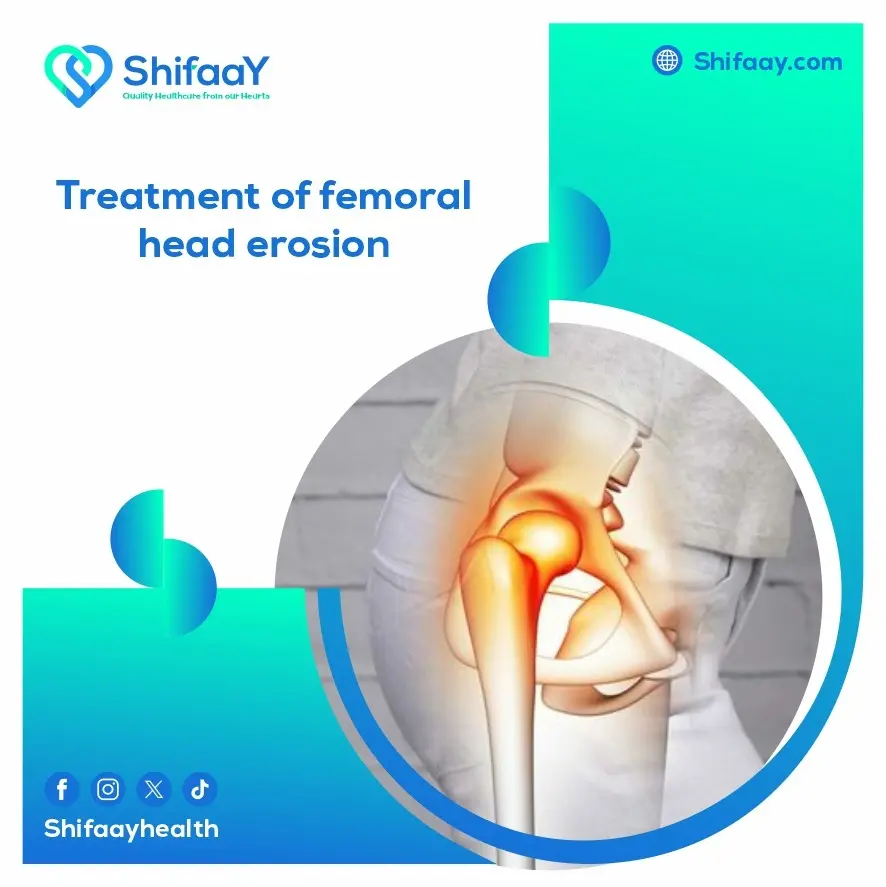
Imagine that your constant pain while walking isn’t just fatigue or muscle tension, but rather a silent indicator of a serious medical condition that could gradually develop without early symptoms. Avascular necrosis of the femoral head—also known medically as osteonecrosis—is often the underlying cause of this pain. It is one of the most critical orthopedic conditions that usually begins silently but can significantly impact your quality of life if left untreated. This highlights the importance of precise medical awareness and the pivotal role played by Shifaay Healthcare Center in providing advanced diagnostic and therapeutic services for such cases with professionalism and compassionate care that puts the patient at the center of attention.
Osteonecrosis of the femoral head occurs due to insufficient blood supply to the bone, leading to the death of bone tissue and impaired regenerative ability. The primary causes include trauma, chronic diseases such as arthritis, or even the use of certain medications that affect blood circulation. As the condition progresses, the bone begins to deteriorate gradually, resulting in severe joint pain and limited mobility while walking. Therefore, early diagnosis and appropriate treatment can make a substantial difference in improving the condition and helping the patient return to normal life.
Here comes the role of Shifaay, known for its reputable expertise in managing such medical cases, offering a comprehensive approach in diagnosis and treatment. The center utilizes advanced medical technologies such as high-resolution imaging to determine the extent of necrosis affecting the bones and joints. It also provides a range of treatment options, starting with medications and physical therapy and extending to modern surgical interventions. Special attention is given to personalized care that focuses on the patient’s needs and comfort. Moreover, the center is keen on treating femoral head erosion using the latest surgical techniques such as joint replacement or bone tissue reconstruction, contributing to the restoration of mobility and effective pain reduction.
Read aslo: Femoral Head Drilling Procedure
What is Femoral Head Erosion?
In the world of healthcare, femoral head erosion is considered one of the serious medical conditions that often raises many concerns among patients. This erosion, which usually occurs due to cartilage and tissue damage in the hip joint, can lead to severe pain and significantly impact an individual’s quality of daily life.
The causes of this condition typically include direct trauma to the joint, aging, or certain chronic diseases such as arthritis or reduced blood supply to the bone, all of which impair natural movement and make daily activities—such as walking or climbing stairs—difficult.
Femoral head erosion usually occurs as a result of damage to the cartilage surrounding the bony head of the femur within the hip joint. This cartilage plays a vital role in facilitating smooth movement between bones. Over time, when this cartilage deteriorates, it loses its ability to protect the bones, causing them to rub against each other during movement. This friction leads to significant pain, inflammation, and reduced mobility.
As the condition worsens, the surrounding tissues may also become damaged, leading to a decline in joint function. Eventually, the patient may struggle to perform daily activities such as walking, climbing stairs, or even sitting for extended periods.
Treatment of Femoral Head Erosion
Treatment isn’t limited to medications or surgery alone. It also involves rehabilitation programs aimed at strengthening the muscles surrounding the joint and improving flexibility. This is often achieved through physical therapy sessions and targeted exercises that help enhance joint mobility and relieve pressure on the damaged tissues.
These programs may also include muscle-strengthening exercises for the muscles supporting the joint, such as the thigh and hip muscles, which help reduce pain and improve the patient’s ability to move. In addition, modern therapeutic techniques such as ultrasound therapy or intra-articular injections containing substances that support cartilage regeneration and reduce inflammation may also be used.
Symptoms of Hip Joint Erosion
It is important to keep in mind that femoral head erosion is a common medical condition that can severely affect the joint, cause health problems, limit mobility, and increase pain. Here are the most prominent symptoms:
- Limping – The person may notice a change in walking style or develop a limp due to pain or difficulty moving the leg.
- Pain and stiffness in the hip or thigh – Patients often feel severe pain in the hip area, which may radiate to the thigh, groin, or knee.
- Limited range of motion – The individual may struggle to move the hip fully, restricting joint mobility.
- Pain that worsens with activity – The pain may increase during physical activity or walking but often improves with rest.
- Referred pain in the groin or knee – The patient might feel unexplained pain in these areas, even if the main issue lies in the hip.
- Usually affects one joint – In most cases, femoral head erosion occurs in a single joint, although in some instances, both joints may be affected.
- Asymmetrical symptoms – When both hips are involved, the symptoms may vary between the two sides, making diagnosis more challenging.
Note:
It is essential to consult a doctor if you notice any of these symptoms, experience difficulty moving, or have persistent pain. If the pain is accompanied by fever or the person finds it hard to bear weight on the leg, urgent medical care may be required.
If you’re looking to know the cost of hip replacement surgery in Egypt, you can contact Shifaay Center for Healthcare to get detailed information.
Read aslo: Duodenal switch surgery
Treatment of Femoral Head Erosion in Children
There is no doubt that the treatment of femoral head erosion in children often requires a prolonged period, which may extend over several years. This treatment typically involves different phases, including bone necrosis, subsequent fracture, and finally, regeneration of the damaged tissues. The available treatment options may be influenced by several key factors such as the child’s age at symptom onset, the disease stage, and the extent of damage in the hip region.
As the disease progresses, the femoral head may gradually weaken and erode, leading to changes in its shape and function. Therefore, medical intervention may become necessary to ensure joint stability and preserve its normal mobility.
In some cases of femoral head erosion in children, therapeutic techniques may be required to promote healing—such as maintaining the femoral head within the joint socket using a special brace, or performing surgery to reshape the surrounding bones. Conservative treatments like physical therapy and pain-relieving medications can significantly help reduce symptoms and improve the patient’s quality of life.
In milder cases, treatments may be limited to conservative methods, including restriction of daily activities, the use of crutches to reduce weight-bearing on the affected joint, as well as physical therapy and anti-inflammatory medications to relieve pain and stimulate healing.
Causes of Femoral Head Necrosis
Femoral head injuries are considered complex medical conditions that can result from various causes. These injuries often lead to the destruction of the femoral head and significantly impact the patient’s mobility and quality of life. Below are the most prominent causes of femoral head necrosis:
- Trauma and injury, such as femoral neck fractures, which are often associated with damage to the blood vessels supplying the femoral head.
- Osteochondral degeneration in the hip joint, accompanied by deterioration of the bone and cartilage surrounding it.
- Alcohol toxicity, where excessive alcohol consumption leads to the destruction of the femoral head and causes bone necrosis.
- Radiation exposure, where radiation therapy contributes to the destruction of bone tissue in the femoral head region, resulting in necrosis.
- Corticosteroid use, which is known for its harmful effect on bones and increases the risk of femoral head necrosis.
- Cytotoxic medications used in cancer treatment, which may cause bone degradation and lead to femoral head necrosis.
- Rapid decompression (e.g., during ascent from deep underwater), which may cause gas bubbles to form and damage bone tissues.
- Occupational diseases, affecting certain workers such as divers and miners, who are more vulnerable to circulatory problems impacting the bones.
- Metabolic disorders, such as elevated bile acids or high blood sugar levels.
- Blood clotting disorders, which lead to thrombosis in the blood vessels supplying the area, causing bone tissue damage.
Complications of Femoral Head Erosion in Children
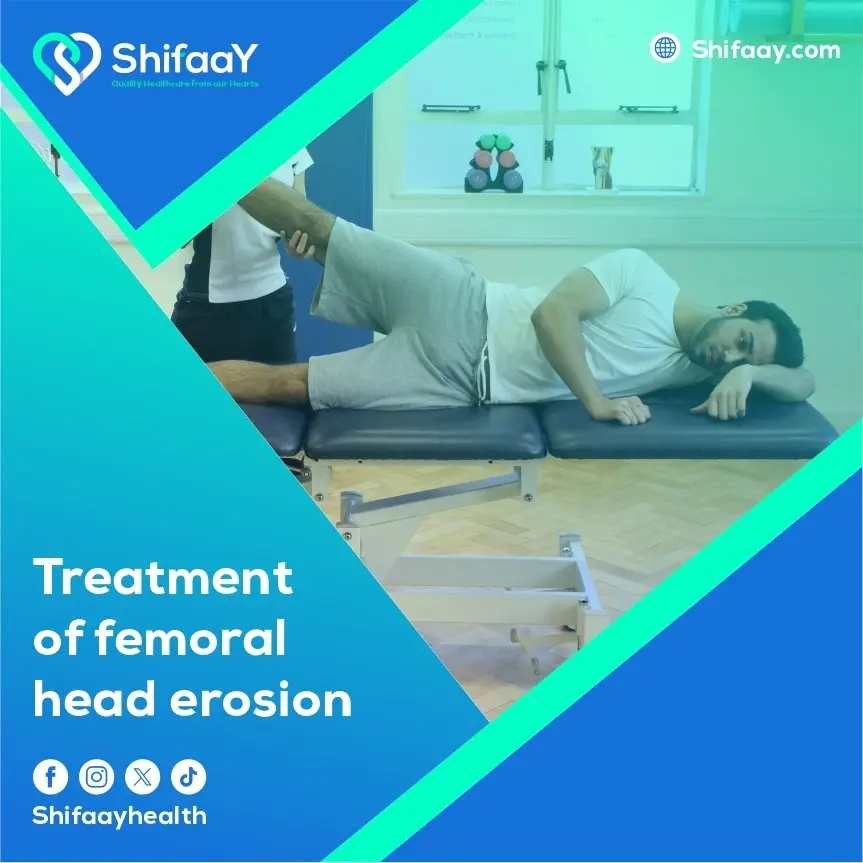
Neglecting the treatment of femoral head erosion in children can lead to a number of serious health complications, including:
First, an increased likelihood of developing hip joint arthritis during adolescence, especially if the joint heals abnormally.
Second, the affected child may face early joint degeneration if the bones fail to properly integrate following treatment.
Third, children diagnosed with Perthes disease after the age of six are generally more prone to hip-related issues later in life, whereas earlier diagnosis tends to be associated with better chances of natural recovery.
Despite the many challenges that children with femoral head erosion may encounter, there is significant hope for treatment and recovery. Credit goes to Shifaay Medical Center, which provides the latest medical treatments and advanced technologies. The center relies on a dedicated team of pediatric and orthopedic specialists who work tirelessly to achieve optimal therapeutic outcomes—helping children overcome this condition and return to a healthy, active life.
What Causes Hip Joint Erosion?
Hip joint erosion typically occurs due to aging, as the synovial fluid in the joint decreases, leading to bone-on-bone friction. It can also result from injuries or chronic conditions such as arthritis or obesity.
Is Pelvic Joint Erosion Dangerous?
Absolutely. Pelvic joint erosion can be very serious if not properly managed. It may lead to chronic pain, limited mobility, and a reduced quality of life. In some cases, it may even require surgical intervention, such as joint replacement.

